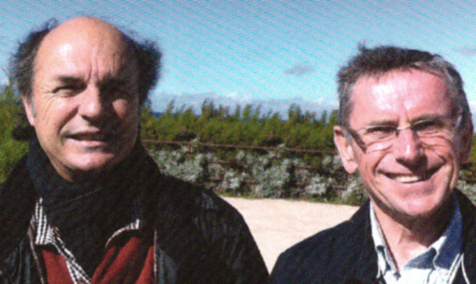Origins of A New Book of Ceol Mor
At first, I tried to study the pieces that I already knew in staff notation, and gradually I discovered that I was able to play tunes on my pipes straight from the canntaireachd. So the next step was to have a look at all the unpublished pieces. I worked with Eric for a while, and we tried to find solutions together, singing away different possibilities of rhythm and phrasing and even noticing and correcting little mistakes in the manuscript. Then on my own I carried on the job for years, never happy with the results and finding new solutions for some tunes which we had left aside because they were too difficult to decipher.

to this:
In order to find the rhythm and phrasing, particularly in the urlar, I decided to use Bob Brown’s method of teaching, which he called the scansion of the tunes, trying to determine the number of beats in each bar or phrase and it helped me a lot to decipher the rhythm of all the different phrases. Also when I could not find the number of beats, I would have a look straight at the variations first, so that I could determine the construction and number of beats. It did not always work as many tunes have variations which don’t always follow the construction of the urlar.
[wds id=”6″]
Then I went through all the other unpublished pieces and gradually I found solutions for most of them using Bob Brown’s scansion system and my own knowledge and intuition. I also had studied the work of people like Archie Kenneth and Frans Buisman, not to mention interesting conversations with Barnaby Brown, and a huge correspondence with my good friend Ronald Smith, a pupil of the late Malcolm R. MacPherson, who helped me a lot with his precious suggestions and information about the meaning of some of the titles in the manuscript.

We decided to transcribe the music as it is in the manuscript with no editing work apart from obvious mistakes which corrected, and always mentioning the addition of cadences which were not indicated but could be played or not according to the player’s taste. After months, or years should I say, of proofreading and corrections of all kinds, we are very happy to publish this new book of ceol mor with tunes which have not be played probably for more than 200 years.
• Check out Patrick’s other piobaireachd recording ‘Ceol Mor/ Light & Shade’ here.
[wds id=”10″]


















Superbly done, Patrick and Jack. I’m quite excited by this publication and all the “new” tunes!